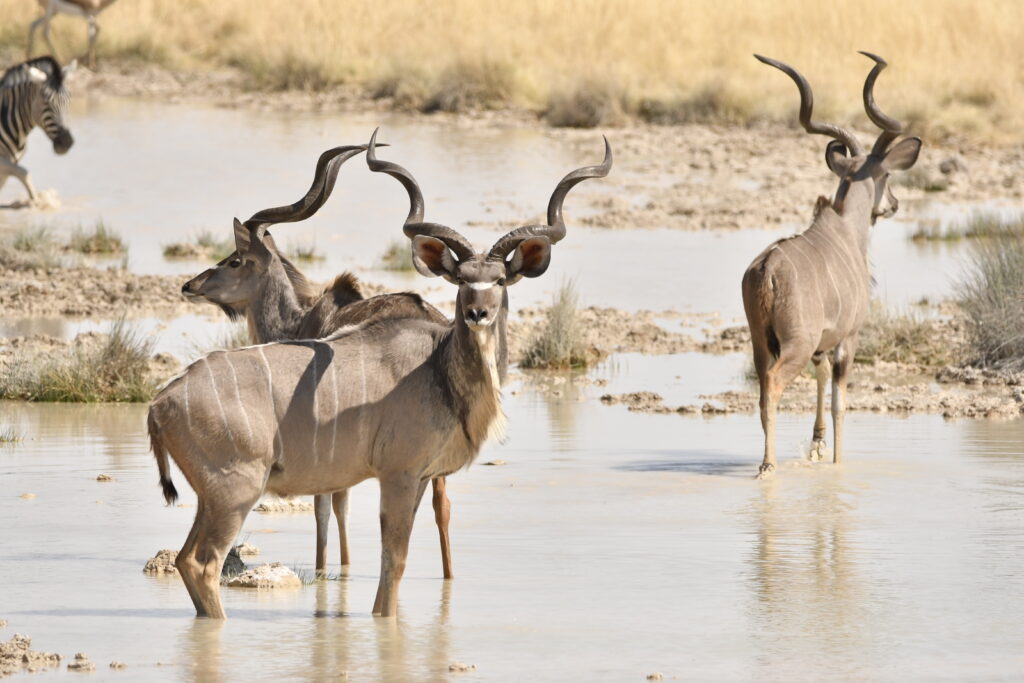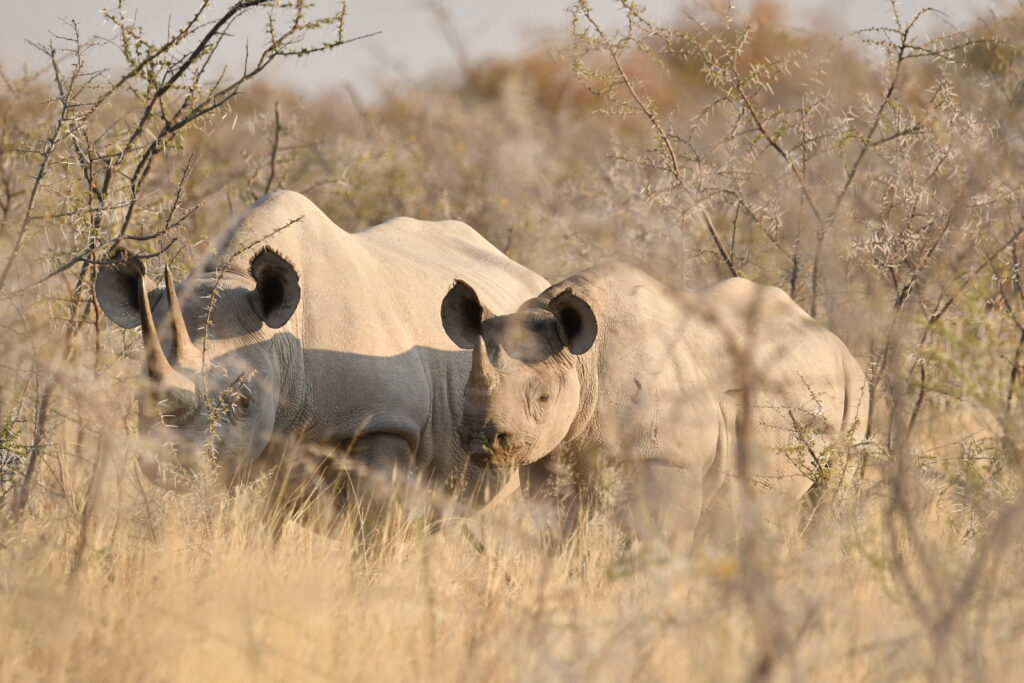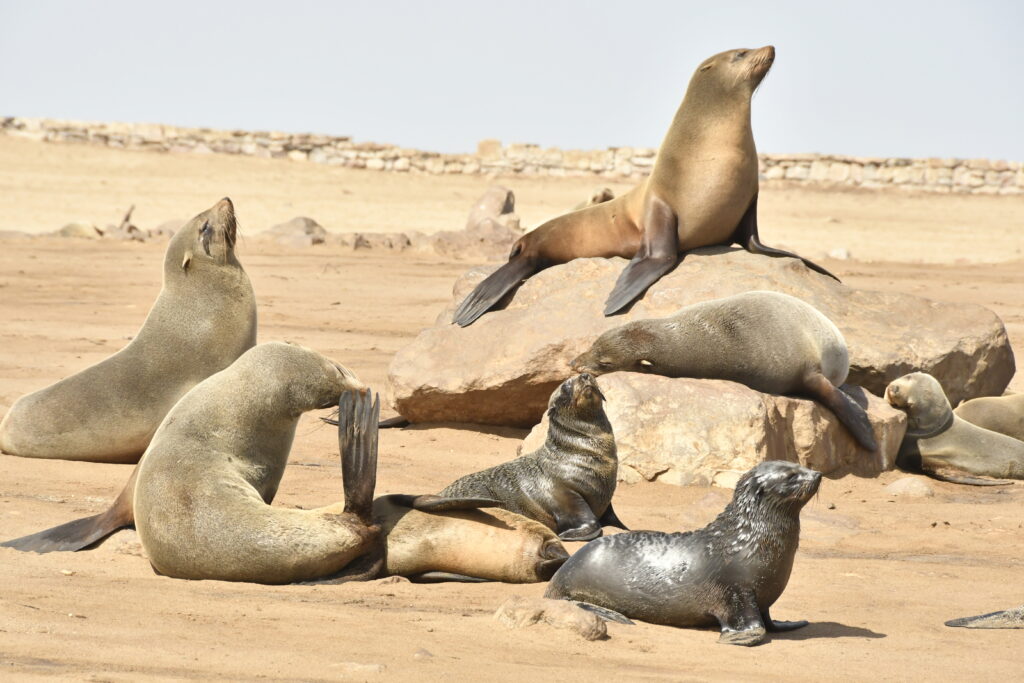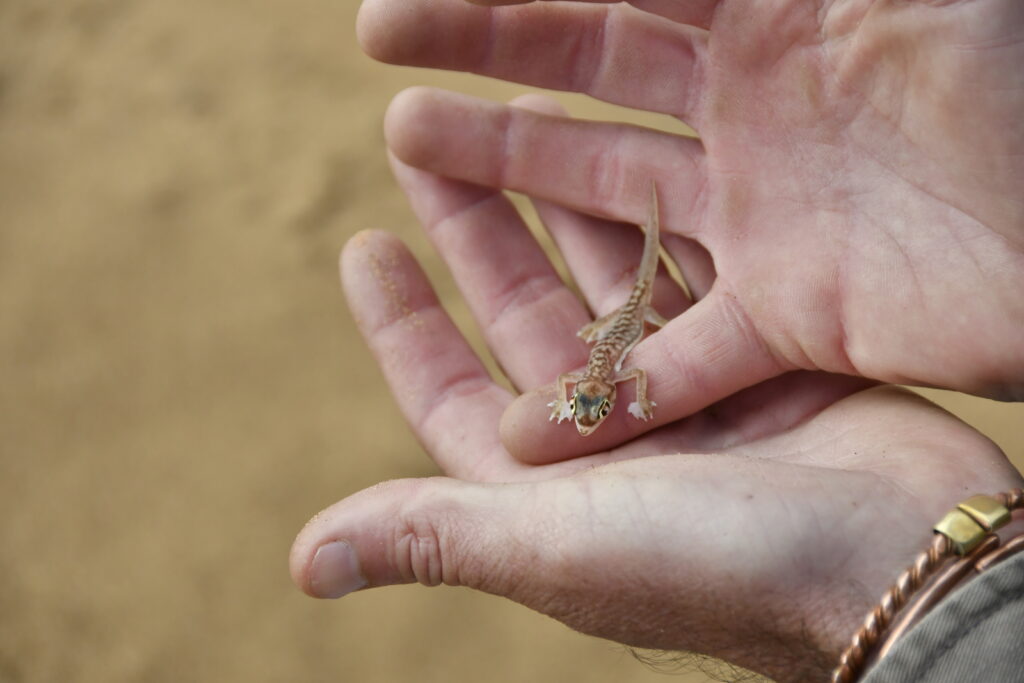THE HAIRY GIRAFFE… IN NAMIBIA
We saw a variety of animals during our journey in Namibia. Here’s a top 5 of those we preferred and hadn’t encountered in previous trips.
 We are François and Benjamin, Canadian and French giraffe hairstylists and travel enthusiasts. On this blog, discover our travels, tips, moods, and everything you need to become a giraffe hairstylist and embark on travelling the world. An honest blog with photos guaranteed 100% unfiltered and untouched. |
1. The greater kudu. Ubiquitous in Namibia, this large antelope is truly beautiful. Its grayish coat with white stripes suits it marvelously, allowing it to blend into the savanna. The male is particularly magnificent with its superb twisted horns that add a certain elegance to its stride. Hunted and poached for its horns, the species, however, is not threatened. As the animal is rather solitary, it is usually seen alone, in pairs, or in very small groups.



2. The black rhinoceros. Namibia allowed us to observe up close and for the first time in the wild this mass of muscles. The raw strength of the animal is striking. A beautiful creature to admire from a certain distance, as they are territorial and can be aggressive if they feel threatened (females, in particular, have a short fuse when their young ones are nearby). You’re not mistaken: it’s not black! Its English name (black rhinoceros) might have been created in opposition to that of its cousin, the white rhinoceros, which itself comes from a mistranslation of the Afrikaans word ‘wijde,’ meaning ‘wide’ and not ‘white.’ Unlike its white cousin, the black rhinoceros has a pointed, prehensile mouth that allows it to graze more easily. Threatened with extinction, it remains very difficult to spot. Read our tips to maximize your chances of spotting one in Namibia.

3. The fur seal. At Cape Cross, you’ll find Namibia’s largest colony of fur seals. During the breeding season (December), nearly 100,000 individuals invade the coast and claim the space. Each female gives birth to only one pup at a time after an eleven-month gestation period. Simply impressive! Stepping out of the car and being greeted by the sounds and smells of seals lounging right in the parking lot is an unforgettable memory.

4. The Cape eland. Another majestic large antelope with beautiful horns. They are usually gregarious and live in small groups, but they can also be solitary. Males tend to be more territorial, while females and young form herds. Hunted for their meat and as hunting trophies for a long time, eland hunting is now regulated.

5. The Desert Gecko. This small animal has adapted remarkably well to the extreme climatic conditions of the desert. A nocturnal creature, it burrows into the sand during the day to escape the harsh sun and heat. They also have rough, scaly skin that helps minimize water loss. Their adhesive pads allow them to climb on various surfaces rather than walk on the hot sand. A great living example of evolution and an interesting animal to discover on a desert safari.

6. The Bonus Photo: The Drinking Giraffe. We had seen giraffes in Tanzania before, but none of them were drinking. This position makes the giraffe vulnerable to predators. So, it needs to display a certain agility by moving its long neck and spreading its legs to be able to drink. As soon as it spots a potential predator, the giraffe quickly straightens up at an impressive speed for its size. A very well-rehearsed choreography.

Find all our other articles on Namibia:




